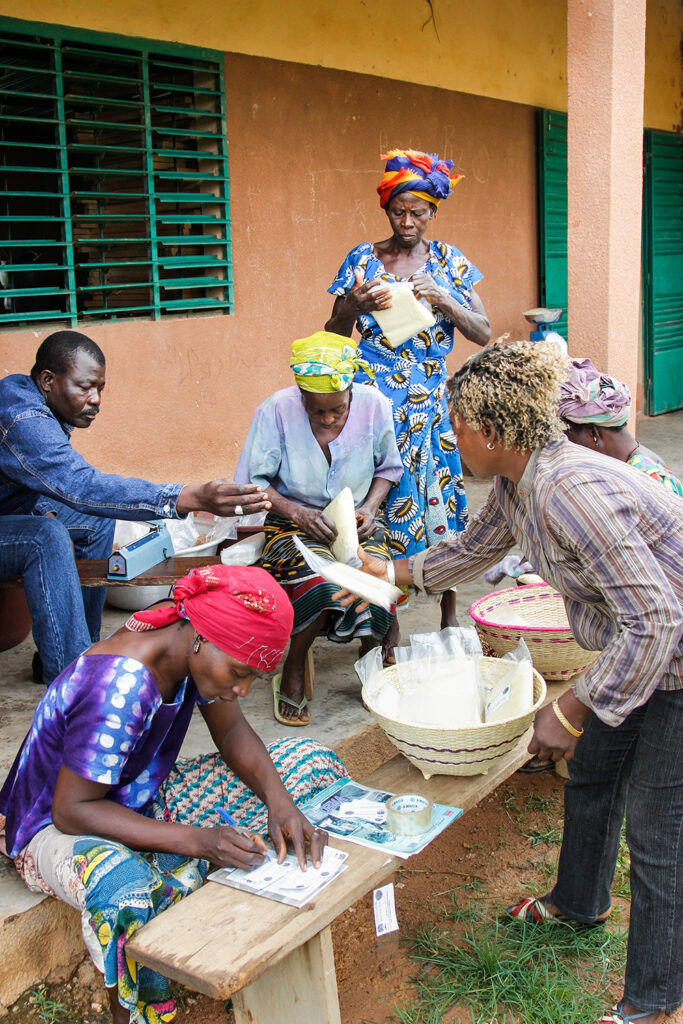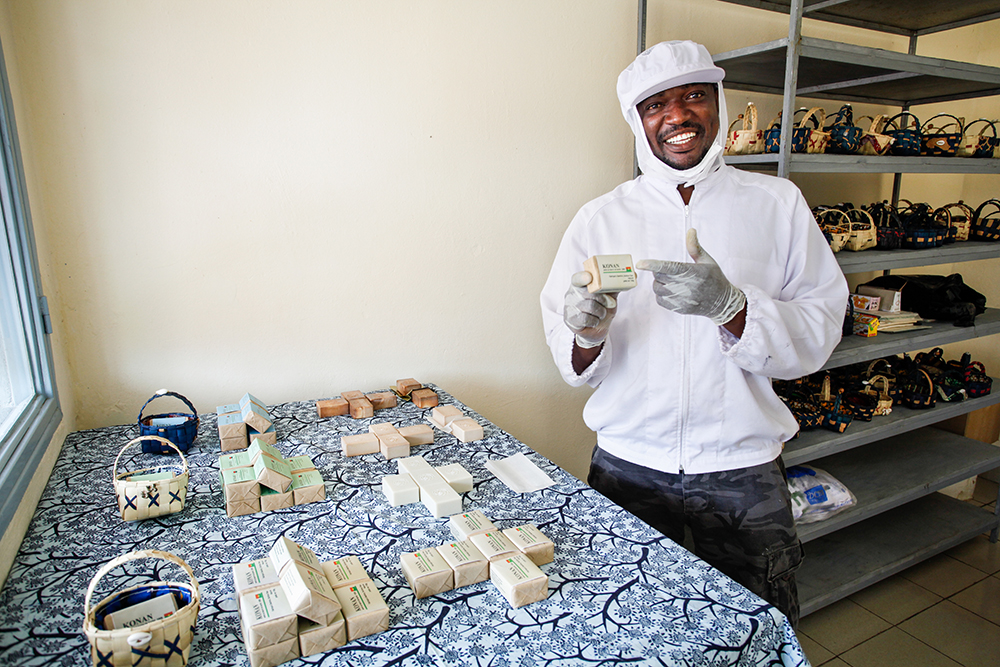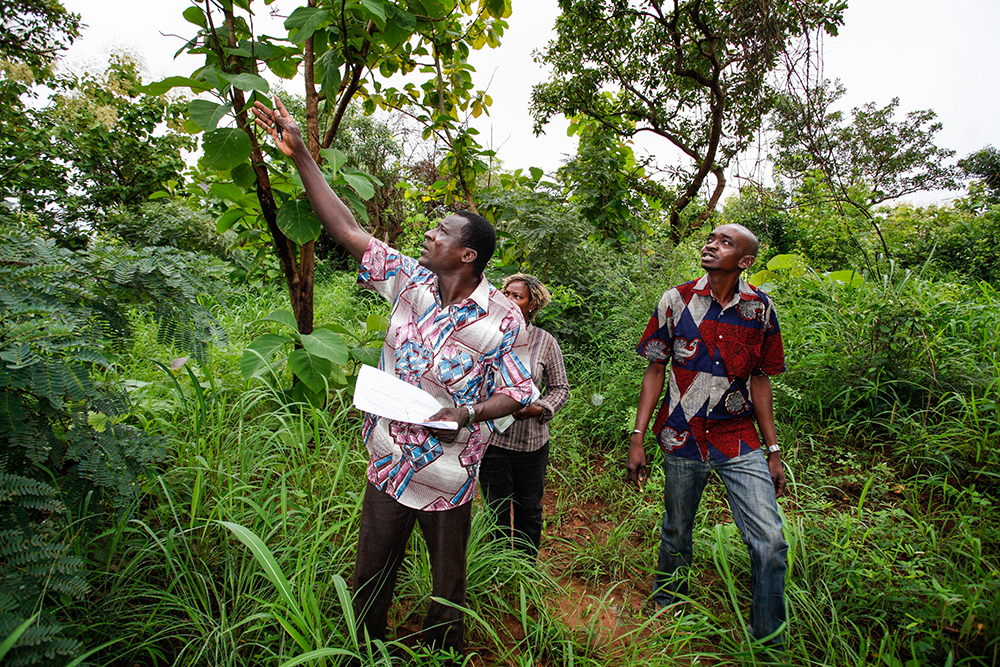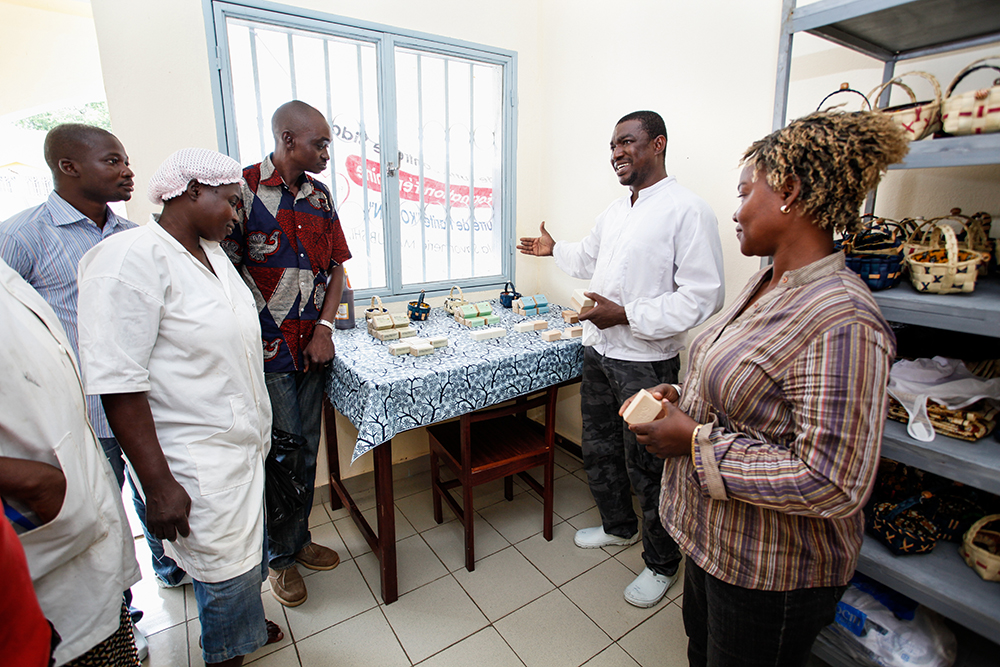1. Approach’s Outline and Features
This approach involves promoting activities aiming to establish sustainable forest management with the participation of local residents by formulating organization among local communities in the forest reserve which is at risk of deforestation and desertification.

In participatory forest management, three pillars are important: 1) capacity-building of the people involved, 2) practice of economic activities, 3) creation of mechanisms among those involved such as farmers, manufacturers and buyers involved in building relationships with private companies and organizations.
In implementing this approach, villagers acquired skills in manufacturing products from forest resources and networks with local businesses and organizations were established, allowing stable and continuous procurement of raw materials and product sales and helping manage forest resources sustainably.
Keywords
Participatory forest management, Local Community organization, Livelihood improvement, Forest management fund
2. Description of the project from which the approach is derived
2-1. Introduction
Burkina Faso is facing serious desertification problems due to its soaring population, slash-and-burn shifting cultivation and rough livestock farming and deforestation. The government has adopted policies aiming to prevent desertification, stabilizing the income of local communities and promoting the rational use of forest resources in the development of agriculture, forestry and livestock farming. In this context, an attempt was made to manage the forest reserves in the Comoé district of the country sustainably, which is under strong anthropogenic pressure, involving the participation of locals.
2-2. Details of the measures taken
- To ensure that activities for sustainable forest management were continuously carried out in the target area, this approach focused on implementing livelihood improvement activities at the village level, building the organization of local communities as an executing body and building the capacity of people involved.
- Livelihood improvement activities focused mainly on activities like producing firewood and charcoal, beekeeping and producing and selling shea butter (produced from the seeds of Vitellaria paradoxa) and Sumbara (a common fermented seasoning made from the seeds of Parkia biglobosa), which have traditionally been promoted by women.
- To strengthen the organization of local communities, training was provided by JICA experts working alongside local forest officers in areas such as activity record keeping and book-keeping and strengthening the capacity to disseminate and share such information. These elements were essential to ensure the management of local community organizations remained transparent. Local community organizations and the forest authorities engaged in forest management activities by clarifying their mutual responsibilities through a partnership agreement.
- Administrative officials, members of local community organizations and other concerned parties deepened their understanding of participatory forest management by attending seminars and joining in Off-JT and OJT. The training recipients disseminated the results to other residents and practiced the activities together. This helped build capacity of relevant people in the activities.
(Perspectives on sustainability)
- The system was designed to ensure continuity of forest management activities by having local community organizations conduct economic activities in forest reserves and contribute a portion of their income to a forest management fund, while providing working capital to cover the expenses of their activities, including the cost of maintaining and replacing equipment.


3. Analysis of the approach
3-1. Impact
- In Burkina Faso, the 1997 Forest Law established a legal framework for participatory forest management and although local community organizations were supposed to be in charge of implementing the framework, only a few such organizations have been established. However, owing to this approach, this legal framework was established nationwide.

- Examples of how local community organizations have successfully expanded the market for their products through this approach are given, working alongside private companies and organizations.
- Phytofla, a company that manufactures and sells medicines and other products using local medicinal plants, is pioneering this field in Burkina Faso. Through the company training, the local community groups learned techniques for collecting and cultivating medicinal plants, subjecting them to primary processing and preserving the same and Phytofla purchased primary-processed medicinal plants from local community groups. The company purchases Cochlospermum planchonii, a medicinal plant with anti-malarial properties, which it then processes into a compound said to be effective against malaria and sold within Burkina Faso.
- The training center of the Lakieta Association, a local social association, produces shea butter soap and began sourcing shea butter as an ingredient from local community groups which were trained by the center. The training center building and equipment were donated by Japan’s Grassroots Human Security Grant Aid. ADANSE Co. Ltd., a Japanese company, has partnered with Lakieta Center to import and sell shea butter soap in Japan.
3-2. Lessons learned
- When acting as an organization, it is essential to ensure transparency in fund management. Otherwise, sustainable forest management that incorporates local input will be difficult.
- Working closely alongside local companies and organizations allows local community organizations to access sales destinations more easily and thus stabilize their income opportunities. It will also make it easier for them to respond to problems as they arise due to their familiarity with local conditions and boost regional development as a whole.
4. Relevant information
| NbS Approach Category | 3-6. 24 |
| Title of the project from which the approach is derived | Participatory and Sustainable Forest Management in the Province of Comoe, Burkina Faso |
| Country | Burkina Faso |
| Biome | Savanna |
| Implementing term | 2007/June ‐ 2012/December |
| Implementing organizations | Ministry of Environment and Sustainable Development (MEDD) |
| Supporting organizations | Japan International Cooperation Agency (JICA), Japan Forest Technology Association (JAFTA), IC-Net Co. |
| Report/Tool/Guideline | Project Completion Report (French) Forest management associations’ Field Manual Farmers School Manual Organizational Capacity Building Manual |
| Contributors to this article | Yasuhisa Tanaka /JAFTA |

